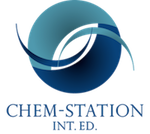- Generality
- Reagent Availability
- Experimental User Friendliness
- Criteria #4
- Criteria #5
-
General Characteristics
-The coupling reaction between alkenyl halides (or triflates) and aldehydes is known as the Nozaki-Hiyama-Kishi reaction. The reaction uses Ni(II) as a catalyst and Cr(II) as a stoichiometric reductant.
-1,2-Addition predominates for α,β-unsaturated aldehydes.
-In 1977, Nozaki and Hiyama reported it as the reaction based on stoichiometric Cr(II). In 1986, Kishi’s and Nozaki’s groups independently discovered that the nickel impurity contained in CrCl2 was the essential contributing factor to the high reactivity and reproducibility.
-The reaction works under mild conditions (room temperature, neutral) and is highly functional group tolerant. Despite the use of toxic chromium, the reaction is still used frequently because of the mild reaction conditions and high practicality in complex molecular settings.
-
General References
・ Okude, Y.; Hirano, S.; Hiyama, T.; Nozaki, H. J. Am. Chem. Soc. 1977, 99, 3179. DOI: 10.1021/ja00451a061
・ Jin, H.; Uenishi, J.; Christ, W. J.; Kishi, Y. J. Am. Chem. Soc. 1986, 108, 5644. DOI: 10.1021/ja00278a057
・ Takai, K.; Tagashira, M.; Kuroda, T.; Oshima, K.; Utimoto, K.; Nozaki, H. J. Am. Chem. Soc. 1986, 108, 6048. DOI: 10.1021/ja00279a068
・Cintas, P. Synthesis 1992, 248.
・Wessjohann, L. A.; Scheid, G. Synthesis 1999, 1.
・Furstner, A. Chem Rev. 1999, 99, 991. DOI: 10.1021/cr9703360
・Takai, K. Org. React. 2004, 64, 253.
-
Reaction Mechanism
The in situ reduced Ni(0) undergoes oxidative addition into the alkenyl halide, then transmetallates with Cr(III). This alkenyl chromium species is considered to react with the aldehyde, with its moderate nucleophilicity allowing for functional group selectivity.
-
Examples
The total syntheses of palytoxin[1] and halichondrin B[2], two of the greatest milestones in the history of natural product synthesis, relied on the highly functional group tolerant NHK reaction.
The use of excess toxic chromium is the biggest drawback of this reaction. Fürstner reported a modified procedure in which Mn(0) is used as a co-reductant to render the chromium catalytic. The addition of TMSCl is key as it helps the dissociation of the product from the chromium.[3]
-
Experimental Procedure
-
Experimental Tips
Cr(II) is sensitive to oxygen. The NHK reaction should be run under inert atmosphere.
-
References
[1] Suh, E. M.; Kishi, Y. J. Am. Chem. Soc. 1994, 116, 11205. DOI: 10.1021/ja00103a065
[2] Kishi, Y. et al. J. Am. Chem. Soc. 1992, 114, 3162. DOI: 10.1021/ja00034a086
[3] Fürstner, A.; Shi, N. J. Am. Chem. Soc. 1996, 118, 12349. doi:10.1021/ja9625236
-
Related Books


![nhk_2[1]](https://assets.en.chem-station.com/uploads/2014/04/nhk_21.gif)
![nhk_4[1]](https://assets.en.chem-station.com/uploads/2014/04/nhk_41.gif)
![nhk_3[1]](https://assets.en.chem-station.com/uploads/2014/04/nhk_31.gif)